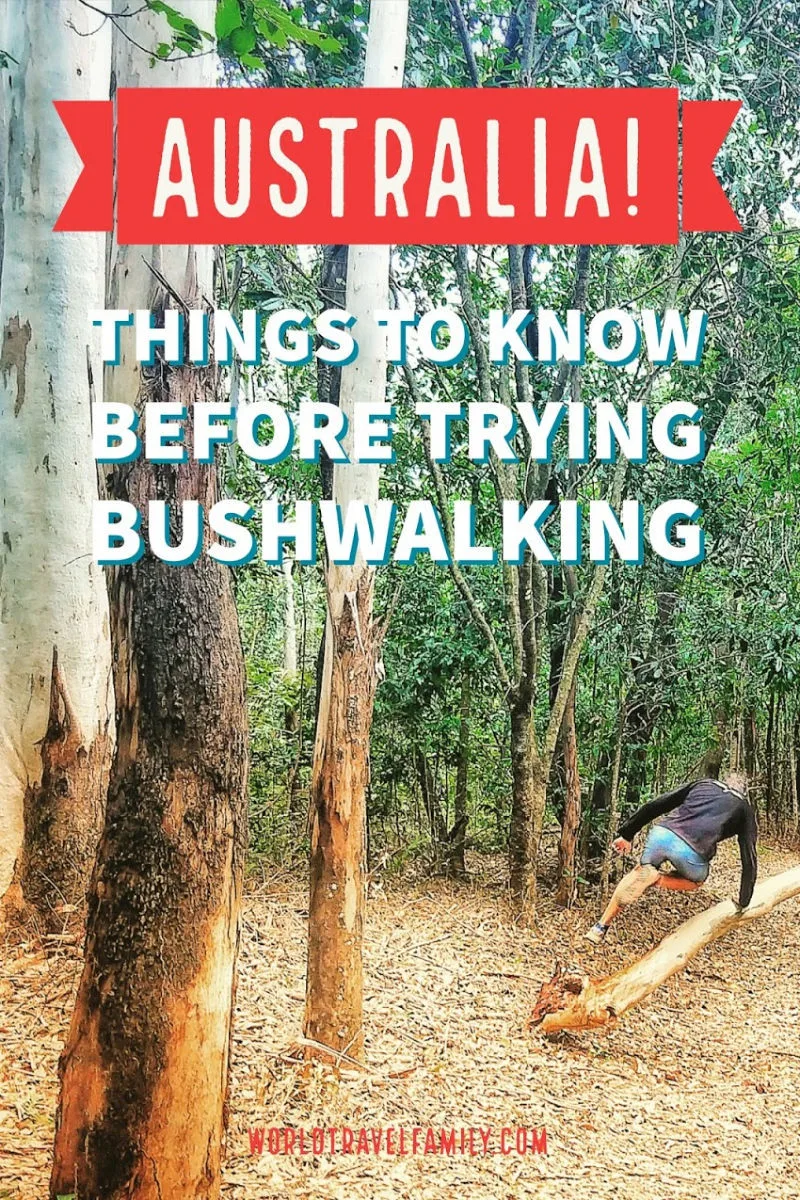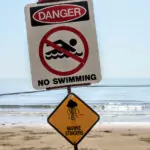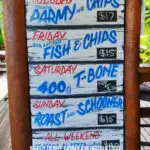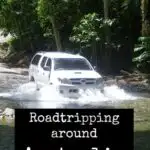Australia offers some amazing bushwalking opportunities and surprisingly, some of the best are within a few hours’ drive of the biggest cities. Sydney and Canberra have plenty of first-class bushwalks and hikes, from day treks to full week and longer hikes. If you can make it to Tasmania, the state is set up for bushwalking. We’ll talk about a few Australian bushwalks below and preparation for these hikes. People do come unstuck in the Australian bush.

My husband, Chef, is a veteran of Australian bush walks, he completed many of the best hikes in Australia as he worked towards his Queen’s Scout award and once we got together (you can read about how we met here) we took our shared love of walking to the world. We’ve completed the 3 week Annapurna Circuit trek and the Inca Trail high in the Andes along with the Everest Base Camp Trek ( with kids). I’m turning this post over to him, he’s the planner and organiser of all our walking adventures.
Bushwalking in Australia Tips and Trails
Things to Remenber When Walking in the Australian Bush
Bushwalking has to be the best way to really experience wild Australia, you can connect with nature, miles from modern distractions and the wildlife will come to you.
Classic Australian Bushwalks
The Blue Mountains in New South Wales have many bushwalk and hikess including the famous Six Foot Track, a 44.3km trail that connects Katoomba with Jenolan Caves. Once a bridal trail it has become a popular weekend getaway for avid bush walkers. Rated as hard it involves a lot of hills and requires you to be fully self-sufficient.
The track starts just north of Katoomba at Explorers tree and finishes at Jenolan Caves. You can catch a bus to the start at Explorers tree or self drive and park. At Jenolan Caves there is no public transport but you can park your car if you’re going to car pool.
Trolley tours does offer a one way lift back to Katoomba but requires pre booking. It leaves at 3pm each day and takes about 90 minutes.
There is car access to one of the camping sites if you want to have things dropped off or meet up with people not walking the entire trail.
Tasmanian Hikes
In Tasmania, the Overland Track in the Cradle Mountain-Lake St Clair National Park is one of the most famous and therefore busiest bushwalks in Australia. It is a 65km walk through national park from Cradle Mountain to Lake St Clair and usually takes about 6 or 7 days. It is rated as moderate to advanced with particular warnings about the frequent and changing weather patterns, even in summer. You’ll need to be self sufficient for the entire hike.
There are both camping and camping huts along the route and both need to be pre booked between 1st October and 31st of May inclusive.
Most people walk from Cradle Mt to Lake St Clair. There isn’t public transport but shuttles do run between the two visitor centres at the start and finish of the walk. Most commonly people drive to Lake St Clair, park and catch a shuttle or car pool back to the start.
At Lake St Clair you have the option of walking an extra 7 hours or catching a ferry across the lake. Bring some cash just in case.
Bushwalks in Queensland
In Queensland try the Thorsborne Trail on Hinchinbrook Island, a 32Km moderate to hard walk that should take 4 to 5 days. You’ll need to be self-sufficient although water is available along the length of the path.
Acess to Hinchinbrook Island is via private boat or commercial ferry. The commericial ferry runs to both the north and south of the Thorsborne trail. Cardwell is the nearest mainland town where you can stock up on supplies and catch the ferry.
You’ll need to watch out for both crocodiles and stingers (summer months- stinger season) as they frequent the area. Take note of tide times and heights as these can pose a danger as you navigate sections of the trail.
Australian Bushwalks in Victoria
In Victoria the Great Ocean Road is famous as a drive but there is also the Great Ocean Walk. 104 km walk that follows the coast with the highlight being the 12 Apostles. This walk winds through numerous national parks and is rated as a moderate hike.
Taking approximately 8 days you need to pre book camp sites or, if you want a little more luxury, you can even stay in accommodation huts slightly off the trail. Car access to parts of the track are scattered along the route which allows you to just do as much or as little as you like.
For more great Australian bush walks try Australian Geographic’s Top 10 Australian Walks.
Precautions and Preparations for Bushwalking
With any activity you need to take precautions and choose the right equipment. It will make the difference between an enjoyable walk and a nightmare journey. Over the years I’ve narrowed down the equipment list to contain the essentials. You have to carry everything, so be as minimalist as possible.
A Good Pack for Bushwalking
This is the single most important piece of equipment that you will ever own in regard to travel and bush walking. Don’t scrimp on money here. You get what you pay for.
My first pack, which I had for 15 years was a brilliant 65 liter Berghaus backpack. A top loader with a bottom access zip, this pack covered me through my Queen Scout award, moving to and living in London and my first big RTW trip, including hiking in the Himalayas
It didn’t have all the fancy bells and whistles but was seriously tough and rugged enough to withstand the occasional immersion in rivers we traversed, never letting in water.
The Right Footwear for Australian Bushwalking
Don’t think that just because your boots are expensive that they will do the job.
Unlike the backpack you may need two types of boot to take on high altitude/winter bush walking and summer light hiking.
For the former a pair of single piece leather boots is best. The more pieces, the more seams that can leak. Looking fancy doesn’t translate to being fancy.
Hiking shoes are common-place now. Various big name companies make them and if you are only doing light walking these are perfectly suitable. Snakes biting your ankles is something to think about, leeches and ticks too, but try not to worry too much.
If you are walking through hot jungles those big heavy leather boots won’t really help, go for a summer boot with more breathability.
The golden rule with boots is to try them and walk around in them. Even in the shop, spend 5-10 minutes with them on to get a feel.
Tents
If there are two of you, don’t take an 8 man tent. The extra hassle won’t be worth the extra unnecessary space.
A good, sturdy, two-man dome tent will suffice for most bush walks. Rarely have I used anything other than a $120 dome tent. When I’ve used the more expensive versions I have to confess to not really noticing the difference of several hundred dollars. Think where else that money could be better spent.
Camping Stoves for Bushwalking
Years ago we had billies and fires but with more and more fire bans it is prudent to have an alternative fuel stove. I used the Trangia stoves which run off methylated spirits, a cheap, easily bought, fuel source. These stoves pack down small and are incredibly easy to use. They can be used in any weather from boiling water for coffee in a snow storm to cooking a full dinner for two.
Rain Protection
The last essential would have to be an outer layer because with unpredictable weather you need a good breathable rain jacket that will cut both the wind and the rain without letting you swelter inside. Goretex used to be the last word in this but had the costs to match. $300 for a jacket isn’t easy when there are 4 in the family. These days there are other materials on the market. This has pushed the price down but a good jacket is still not a cheap outlay. If you come across a bargain question the materials and their breathability, Look for breathability ratings, how much they can breathe (expel water) per hour.
There are many other things you may need depending on your particular circumstances. Always remember to take clean drinking water, sunblock, and some emergency food supplies, even on a short hike. People have been known to get lost, for days sometimes. Always tell somebody where you are going and what time to expect you back. Take a map and compass and plan as much as you can. Even if you have a phone with GPS, you could easily find yourself out of charge or out of coverage. Take a look at our post on the best trekking watches and consider investing. It’s impossible to be over-prepared for bushwalking in Australia, that’s the boy scout in me coming out! Want more recommendations on travel to and in Australia? You’ll want our Australia Travel Blog page.
If you'd like to hire a car during your stay, use this car rental comparison tool to find the best deal!
We also suggest you take a look at this company to get a quote for all kinds of the more tricky adventure or extended travel insurance.
Try Stayz / VRBO for an alternative way to find rentals on homes/apartments/condos in any country!









Great post. We certainly do have some incredible places to bush-walk. There are quite a few trails within an hour of Perth too!
My husband spent most of his life on the East of Australia, we’ve been to Perth, but not for that sort of adventure. Must try one day!